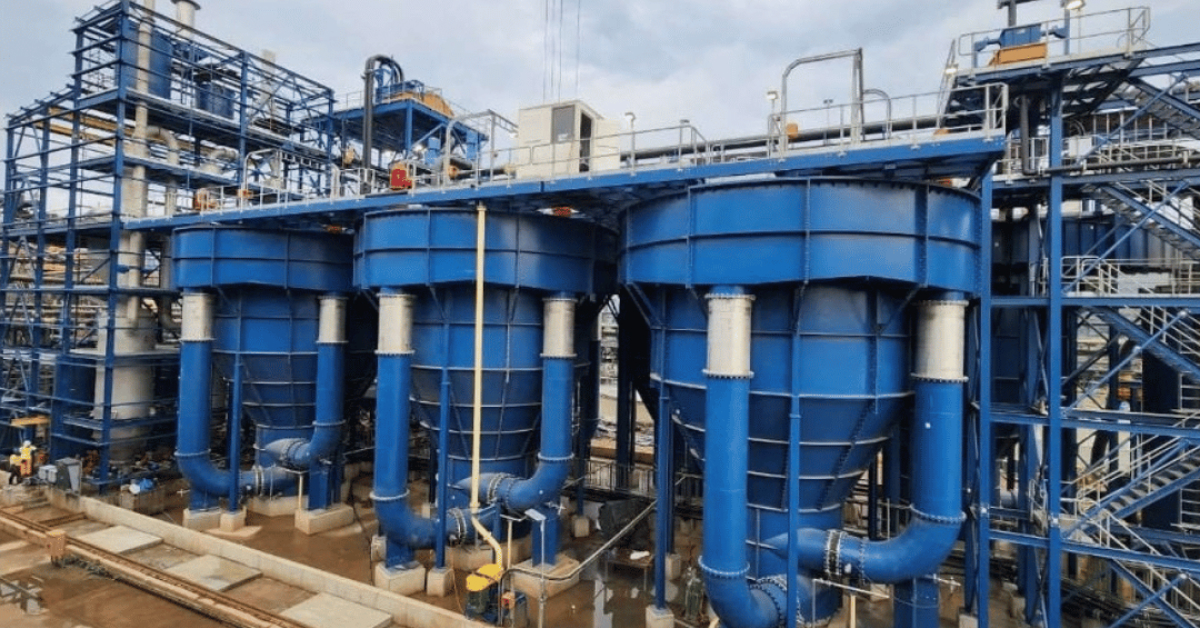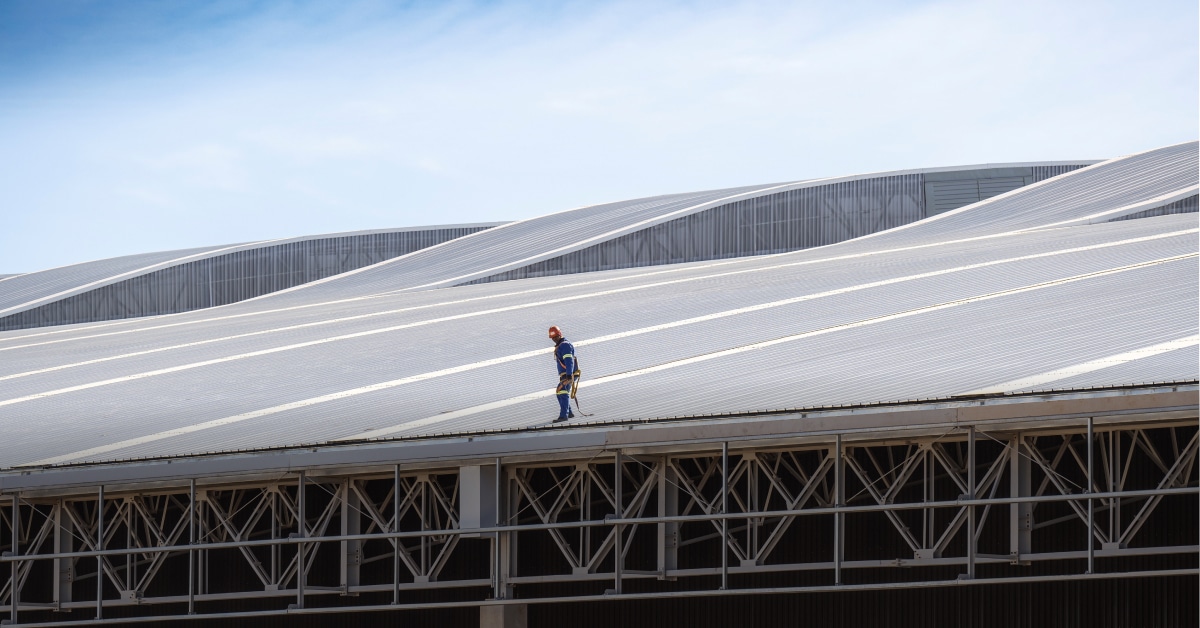Adapted by Spencer Erling,
Education Director, SAISC
It is not difficult to comprehend why architecturally exposed steelwork can become the subject of hot debate and maybe even harsh words in the contracting environment. If the requirements of the architect are clearly defined then the likelihood of misunderstandings in the contract will almost certainly be largely eliminated.
This article attempts to set some guidelines which will ring-fence the degree of ‘spit and polish’ required to achieve the desired results.
Some of the characteristics of steel:
• Very strong in tension and can be strong in compression if supported in the transverse direction to limit buckling lengths.
• It has great strength to mass ratio.
• Steel can be manufactured very accurately, and be designed and built to look very slender or thin.
• It can be machined, bent, curved and formed into interesting shapes.
Steel is typically joined in two ways:
Welding (typically done in the workshop) and bolting (used to be riveting in the ‘good old days’) which is typically done on site. The advent of computerised detailing packages and NC equipment in the workshops has promoted this form of bolting construction.
Cost considerations
• The more complicated the structure, the greater will be the labour input, increasing the rate per ton for the steelwork. For example just the process of curving steel can add 20% to the price of those elements.
• NC cutting equipment (plasma and/or laser) whilst quite expensive as a process has opened up the scope for being able to build complicated structures and connections with a minimum amount of fuss leading at least ne engineer to philosophise; “just because we can build very complicated non-repetitive wavy structures is this justification to get so complicated?” • A ‘spit and polished’ finish costs megabucks so understanding just what is visible and will be noticed by the general public requiring this finish will help keep costs under control.
• Repetition and standardisation can help reduce costs.
• The labour cost of steel construction is in the connections. So keeping connections simple will generally keep labour costs down.
• The use of samples and mock-ups help set the standards that are required.
Constructability
• Transport size limitations can and will affect the design and fabrication of various elements.
• The structure must be buildable, preferably without too much temporary supporting and guying.
• The mass of individual components or assemblies will control the size of the erection cranes required for the job.
• Access for sensibly sized (i.e. not too big) cranes and equipment must be good.
• High quality finishes often depend upon good fettling (grinding). Whilst apparently quite easy to do, grinding needs the practice of an expert artisan to make the finished object appear better looking after grinding than it was before grinding. It is easy for the non-practised expert to do more local damage than good! Ouch! • Even the most basic of structures for nonarchitectural finish use will require some grinding.
Why do we grind steelwork at all? There are three basic reasons:
1. From a safety-of-the-worker point of view: sharp edges need to be removed to avoid cuts and the like. Only a basically trained operator is required for this process.
2. From a corrosion-protection point of view: sharp corners need to be rounded to ensure paint or galvanizing will stick to the element. A reasonably skilled operator is required for this operation.
3. From a ‘spit-and-polish-finish’ point of view: a highly skilled artisan is needed to execute this category of grinding successfully.
THE CANADIAN APPROACH TO AESS
In order to get some consistency into how to describe architectural finishes, the Canadians have come out with a six category description which brings a level of ‘order’ into their descriptions to close the gap in understanding requirements by contractors.
The basic premise is that if the structural form (design concept) is good, the lasting impression the viewer will be left with, will depend upon the connections (fit) and surface finishes.
The six categories are dependent upon:
• The type and function of a building
• Viewing distance (typically less than or more than 6 metres)
• What you are willing to spend to achieve high quality finishes
1. SSS- Standard structural steel
Typically factory buildings, roof structures and the like, not necessarily for architectural finish, apply.
• Steelwork often hidden by ceilings and the like
• Aesthetics are not important.
• Engineers define the specifications.
• For non-corrosive environments, space welds are acceptable. Weld splatter does not have to be removed.
• A good design is important.
To achieve an acceptable finish:
• Usually type 1 grinding required and if corrosion is an issue, type 2 will apply.
• Bolts will all be of the same length, facing the same direction. Longer projections through the nut are acceptable.
2. AESS1 – Basic elements
Roofs for shopping centres, sports halls, stadiums and the like apply along with the following:
A viewing distance of more than 6 metres; the steelwork is often congested with services; and is usually not well illuminated. To achieve an acceptable finish, as above for SSS plus:
- Edges to be ground smooth
- Welds should be continuous (or made appear to be using body filler)
- No open holes
- Bolts sticking out could be limited (if required)
- Weld splatter to be removed
3. AESS2 – Feature elements
Airports, atriums, exhibition halls, community centres apply. Although the viewing distance is still more than 6 metres the elements of steelwork are regarded as visually important.
To achieve an acceptable finish, as above for AESS1 plus:
- Optional use of visual samples, mock-ups assist to set the standards
- A closer tolerance of fit up can be specified (at a cost) of about 50% of the normal tolerances.
- All fabrication marks to be hidden
- Neat continuous welds are basic to this form of construction (taking into account that continuous welds can lead to distortion of the steel!).
3. AESS3 – Feature elements
Lower elements to airports, lobbies, shopping centres and atriums apply. The viewing distance is less than 6 metres and the surfaces are close enough to be touched. To achieve an acceptable finish, as above for AESS2 plus:
- Special attention should be paid to make details/ connections more elegant.
- Welded connections can be more preferable.
- The use of castings for connections and/or stainless steel is often considered.
- Mill marks to be removed.
- Butt (Complete Joint Groove) welds should be ground smooth and filled if required.
- Hollow section joints should appear to be seamlessly welded.
- Gaps are not permitted, close tolerance fit is essential.
4. AESS4 – Showcase elements
The end product just does not even look like steel!
To achieve an acceptable finish, as above for AESS3 plus:
- Hollow section connection and weld seams ground smooth and/or filled
- Other welds to be contoured and blended
- Surface indentations to be filled and sanded smooth
- After painting, weld ‘show-through’ is to be minimised
5. AESSC – Custom elements – ‘Whatever you want’
You need to clearly define and specify your requirements. There is no doubt that samples and mock-ups will be an essential part of the process.
Some ideas as to what could fall into this category would be:
- A finish smoother than a brand new Ferrari
- A very rustic or rusted finish
- Steelwork interfaced with high quality wood finishes etc.
THE INFLUENCE OF COATINGS AND FINISHES
It is impossible to cover all the issues under this topic but a few pointers are:
- Thin glossy coats accentuate imperfections.
- Thicker, matte and/or mottled coats tend to conceal imperfections.
- Regular cleaning of the structure, removal of dust, keeping pigeons away is important to retain that special look.
- Good surface preparation and shot blasting before coating helps prolong the good looking life of the steelwork.
- When specifying intumescent paints for passive fire protection and for achieving a ‘good architectural’ finish, remember these coats can be between 1 mm and 4 mm thick. Achieving a ‘spit and polish’ look is nigh well impossible.
- Thick coatings usually damage easily and are very difficult to match during coating repairs.
- Metallic coatings are great for corrosion resistance in the right corrosive environment. The most common is hot dip galvanizing. It is very cost effective, but it is very difficult to achieve a consistent shiny and/or spangled look because the chemical content of the steel affects the zinc coating thickness and finish. Talk to an expert if your galvanized finish is critical to your final look.
- Hot metal spray coatings are good alternatives to hot dip galvanizing for corrosion resistance but are very rough or porous in appearance. The process is relatively slow and expensive.
- Weathering steel (Corten) is very effective in some corrosive (or noncorrosive) environments. The steel allows surface rusting to happen, but the rusting does not progress further. The rusted appearance has great appeal to some architects. The material is unpredictable as to how the end product will look and how consistent the rusted appearance will be. It is vital to keep run-off water from rusted surfaces away from concrete, the rust leaves a tell tale trail on the concrete.
CONCLUSIONS
Understanding your finish category and describing it clearly to the contractor will go a long way to achieving the desired result. Choose a contractor with a good track record in achieving the standard of finish you want.
Remember that old adage about paying peanuts gets you monkeys; pay the right price for the standard you want.






